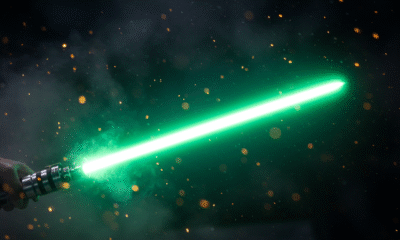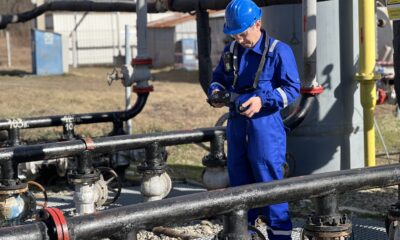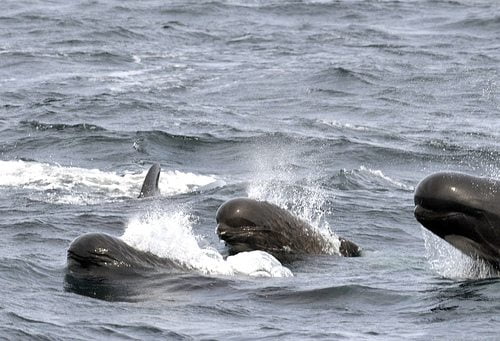

Environment
Faroe Islands diary: an informed debate on the whaling issue
Whaling: rugged Scandinavian men with spears and harpoons chasing poor, defenceless whales out of their natural habitat, before slaughtering and eating them. It’s fair to say I headed to the Faroe Islands with a few preconceptions of the controversial practice.
Whaling in the Faroe Islands is almost as old as the country itself. The first settlers are said to have reached the island somewhere between 400-800 AD, and there is evidence to suggest these early inhabitants took to the Faroese waters in search of food, and came back with pilot whales for dinner. The issue was the elephant in the room for my recent visit to the country.
During research before my trip, I had watched a rather harrowing animated video from the 80s, narrated by Sir Anthony Hopkins, that detailed alleged atrocities taking place in the Faroes. “The more the whales scream, the more the crowd seem to enjoy it”, Hopkins says, almost as if killing these magnificent animals is a sport for the locals.
Whatever it is, it’s certainly not pretty. A quick Google search of ‘whaling in the Faroe Islands’ brings up hundreds, if not thousands, of images of whale hunts, known locally as the grindadráp, with villagers seen struggling with bloodied whales in crimson-coloured water.
But many Faroese people take a very different view and I wanted to hear what they had to say. After all, the role of a journalist is to give readers the information they need to make their own informed decisions.
However, I would advise people of a squeamish disposition to stop reading now.
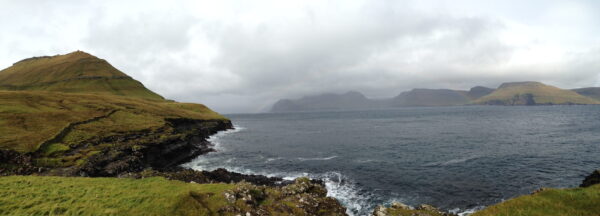 In Tórshavn, the country’s capital, I met Bjarni Mikkelsen from the Faroese Museum of Natural History. Bjarni told me that once upon a time, whales were a staple part of the Faroese diet. It remains a traditional dish today, but is eaten less frequently, for reasons I’ll discuss shortly.
In Tórshavn, the country’s capital, I met Bjarni Mikkelsen from the Faroese Museum of Natural History. Bjarni told me that once upon a time, whales were a staple part of the Faroese diet. It remains a traditional dish today, but is eaten less frequently, for reasons I’ll discuss shortly.
Pilot whales – specifically the long-finned pilot whale – which the Faroese hunt actually belong to the dolphin family. They are black or dark grey, have rounded foreheads and can grow to 25ft long and over 2,200 kilograms in weight. They are formidable creatures and have been known to attack and destroy boats that get into their territory, especially if protecting their young.
Historically, whaling in the Faroe Islands was a free-for-all with little or no regulation, meaning villagers could realistically use whatever they liked to capture and kill the animals. While the industry is perhaps not as brutal as it once was (spears and harpoons were used until the mid-80s; now the creatures are driven to shore and killed quickly with a special whaling knife, known as a grindaknívur) the arguments against the practice remain as strong as ever.
Bjarni explained the process of the grindadráp in detail. There are six sheriffs across the Faroe Islands who, when notified that a group of whales (known as a pod) had been spotted nearby, tell one of the local foremen to gather their team and prepare for the hunt. Pilot boats then come together, and drive the pod towards a cove, where they are forced into shallow waters.
They are then pulled onto the beach using a blásturongul – a blunt hook with a long pole – in their blowhole. Regulation states that villagers cannot kill the whales from their boats, so they must wait until the creatures are beached to use the grindaknívur to cut through their spinal cord, killing them. Bjarni assured me the whales die almost instantaneously (many say otherwise), but their last few moments are certainly not comfortable.
The meat and blubber that comes from the dead whales is distributed for free among the people who helped kill them. It’s a free source of meat that can last a family a few years if stored properly.
Whaling is definitely not a pretty process. Even as I write this, I’m grimacing at the phrases “cut through their spinal cord” and “blunt hook in their blowhole”. For these social and communicative creatures to be killed explains the natural revulsion and outrage among many people, not just environmentalists – especially given the creatures’ pursuit and graphic deaths.
“The hunt may have played an important part in Faroese history, but that is no reason for it to continue”, a spokesperson for global charity Whale and Dolphin Conservation (WDC) told me upon my return to the UK. “Today the brutal slaughter of these intelligent, sentient creatures is unnecessary, inhumane and a danger to humans as well as the whales.”
We clearly should not be hypocritical. In the UK, the sheep, cows and chickens we rear in our farms in the UK are often killed in equally horrible ways. Are we just desensitised to the killing of these animals because they happen behind closed doors?
The spokesperson added, “Unlike cattle or other animals slaughtered in the UK or elsewhere, whales and dolphins are wild animals living in distinct populations and in many cases little research has been carried out on their status or how these hunts may affect their survival.
“They also have complicated social structures and in some instances specific cultures. It is not known what effects the hunting or capture and removal of individuals from these populations has on the welfare and conservation status of the remaining animals. Also, unlike domestic animals which in most countries are subject to protection from inhumane slaughter methods and treatment, whales and dolphins have no such protection from international regulations and laws regarding killing techniques that are cruel and painful.”
I asked Bjarni about the sustainability of the industry. He came back with an interesting answer, saying, “If the grindadráp is not sustainable anymore, we’ll stop. Nobody wants to drive pilot whales to extinction.”
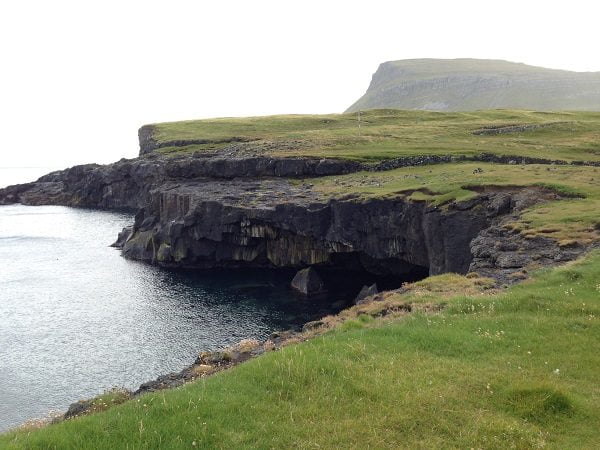 Many suggest, as in the video mentioned at the beginning, that the Faroe Islanders enjoy the grindadráp. Those who take part are often portrayed as bloodthirsty and evil, and whaling is spoke of in the same light as bullfighting and fox hunting. I struggle with this particular description, as most of the Faroe Islanders I met were humble and kind. But what drives these people to gather five to 10 times a year and slaughter hundreds of these creatures? The answer: over a thousand years of tradition.
Many suggest, as in the video mentioned at the beginning, that the Faroe Islanders enjoy the grindadráp. Those who take part are often portrayed as bloodthirsty and evil, and whaling is spoke of in the same light as bullfighting and fox hunting. I struggle with this particular description, as most of the Faroe Islanders I met were humble and kind. But what drives these people to gather five to 10 times a year and slaughter hundreds of these creatures? The answer: over a thousand years of tradition.
While tradition certainly isn’t a justification for the killing of the whales, it at least allows onlookers to understand why the practice happens. But slavery was once a tradition, and eventually the atrociousness of that industry prevailed the dominant culture.
“Not all traditions need to maintained in their entirety”, the WDC spokesperson said. “Look to the islands of the Azores, where whaling played an important historical role, and whose contribution is still celebrated today without actually having to kill the whales themselves.”
Elsewhere, New Zealand and South Africa have found another way to make profit from whales by using them as a draw for tourists and for scientific research. While this activity has many vocal critics, it has also done a lot to compensate former whaling communities, to see whales as an asset worth preserving, rather than just as meat.
But just as people invest unsustainably in mining and fossil fuels and people power their homes using dirty energy, it is culturally difficult for the Faroe Islanders to shift away from traditional ways of thinking. These transitions take time.
Bjarni’s comments about sustainability are encouraging as to the future of whaling. They suggest that the country is aware of at least some of the issues surrounding their highly controversial hunting. Of course, not everyone takes part in the grindadráp. The general consensus among the Faroese people is that whaling should continue, though a large number (particularly younger people) are apathetic and choose not to take part.
The tale contains a twist, however, for the eventual end of whaling in the Faroes may not be because of public pressure. In 2008, Faroese chief medical officers Pál Weihe and Høgni Debes Joensen said that whale meat was no longer fit for human consumption, because of the amount of toxic chemicals – including mercury, DDT and PCBs – that had been found in many samples, derived from manmade pollution of the oceans.
“It is with great sadness that this recommendation is provided”, they said at the time. “The pilot whale has kept many Faroese alive through the centuries.”
Whale meat is generally eaten fresh or hung dried. It’s usually served with potatoes and has been described as tasting very similar to reindeer or moose. However, the Faroese government now recommends that islanders only eat whale meat once a month – and even less frequently for women and children.
To many – the vast majority even – killing whales is unforgivable, evil and often cruel. Meanwhile, for a significant and growing minority, all meat is murder, and they are right. We do need to eat far less meat in the developed world; ideally none. It’s very bad for us, the animals themselves and the planet as a whole.
But it would be intellectually dishonest and hypocritical to condemn those who hunt for food, if you consume meat yourself. In large economies, we find it as hard to shift from meat in our diet. To developing economies it’s a symbol of growing wealth. To many Faroese people, whales are simply a source of meat.
However, the WDC spokesperson has the last, thoughtful word. “Fifty years ago we did not know what we now know about these remarkable creatures. In years to come, the Faroese may look back at their continued slaughter of the whales in the 21st century as a sad, unnecessary attempt to singularly define their cultural identity as whalers when there is so much more to the Faroese people than just the grind.”
I couldn’t agree more with the last line.
This is the last of four diary entries from Alex Blackburne’s recent trip to the Faroe Islands.
Further reading:
Faroe Islands diary: a first glance at the Land of Maybe


 Environment10 months ago
Environment10 months agoAre Polymer Banknotes: an Eco-Friendly Trend or a Groundswell?

 Environment11 months ago
Environment11 months agoEco-Friendly Home Improvements: Top 7 Upgrades for 2025

 Features9 months ago
Features9 months agoEco-Friendly Cryptocurrencies: Sustainable Investment Choices

 Features10 months ago
Features10 months agoEco-Friendly Crypto Traders Must Find the Right Exchange


